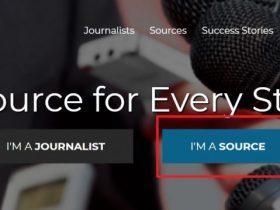A niche is a smaller, specialized subset of something. It is often a gaggle of buyers, a kind of product, a genre of books or film, etc., and as an e-commerce business owner and marketer, it’s important to know the worth of niches.
While larger categories of a selected market or group may have more sales, they also accompany more competition. Meanwhile, niches present pockets of opportunity with less competition.
For example, let’s say you’re curious about creating content and products around health and fitness. If you are trying to urge into the broad category of “Health & Fitness,” you’ll soon end up butting against big competition.
But if you go deeper into the broad category, the competition starts to fall away.
From Health & Fitness, you’ll specialize in a market segment like yoga. But even yoga is big. How about barre yoga? Or better yet, barre yoga for women? Still an excessive amount of competition? How about barre yoga for postpartum moms?
With niches, you’ll serve a selected set of consumers and react to their unique needs.
One of the simplest ways to maximize profits on Amazon is by finding a profitable niche. Narrowing the main target right down to that intersection of what you’re good at and what Amazon has got to provide you with are often a touch of a search. But with all the superpowers available to us, we here at RepricerExpress have just what you would like to nail down your Amazon niche.
What a perfect Product seems like
There are some traits that make a product a far better idea to sell than others.
Size: Something that’s small and lightweight is going to be easier and cheaper to ship. consider something like sheet sets versus big-screen TVs.

Price: People are willing to spend pile, especially because those items tend to be cheaper online due to less overhead. But the sweet spot tends to be between $50-100.
Profit: Aim for a margin of profit of 10-30%. you’ll occasionally find an item with an enormous margin of profit, but that sometimes means the merchandise features a limited sell value (i.e. it’s a hard-to-find item that won’t garner repeat sales). It’s better to stay with something consistent.
Sales: Again, consistency is vital. If you’ll zero in on a product that’ll sell about 10 times each day, you’ll have found an honest Amazon niche.
Try to stand back From Seasonal Products
The biggest advantage of trying to find a distinct segment that doesn’t involve seasonal items is you’ll sell fairly consistently year-round. Unless you’ve got an accepted place to provide a touch Christmas store or a daycare, you’ll probably want to remain faraway from things like ugly Christmas sweaters and faculty supplies. And counting on which country/area is your primary audience, things like air conditioners or snowblowers probably won’t be an honest idea either.
But believe something electronics-related, for instance. People are trying to find things like earbuds, chargers and batteries all the time, so you’ll expect a reasonably consistent demand and turnover monthly of the year. And if you play your cards right, you’ll also plan for a lift in sales at key points of the year).
Look for Product Competitors Without Videos
This item on the checklist is often a touch tough to seek out — more and more retailers are cottoning on to the truth that videos are a sensible thing to feature — but if you discover a neighborhood where there are few-to-no videos of similar/competing products, then you’ve found a possible goldmine.
And if you are doing more research and find this product/area may be a good fit for you. Then doing something like starting a YouTube channel can vault you up several levels, supplying you with an enormous advantage over your competitors.
Think of Products which will Have Continual Demand
Take something like cold cream or multi-vitamins as an example. These are items people will use on a daily basis and can keep ordering once they run out. Latching onto a product that will produce subsequent orders may be a good way to extend the potential for steady demand and sales. And you’ll leverage inertia by counting on customers being more willing to stay with a retailer for subsequent orders than finding a replacement one whenever.

It is not a necessity, but it’s a true plus. it’s a perfect condition to seek out an object which can make sure you have a gentle sales volume throughout the year.
Take the case of Bluetooth headphones. The demand for this product is probably going to be virtually constant throughout the year (with a peak in December thanks to Christmas). Conversely, if we take the instance of air conditioners, it’s likely that it won’t make many sales in winter. Ideally, you would like to avoid these sorts of products that don’t sell much at certain times of the year.
The ideal product will guarantee you a stable turnover. Which allows you to anticipate stock changes. the sole seasonality that’s acceptable is that the peak sales during the vacation season! you’ll use Amazon Keyword Planner or Google Keyword Planner to know the potential seasonality of a product.
Another Tool for locating Your Amazon Niche
Keywords are one of the most important tools you’ll use for researching and selling items on Amazon. You’ll need them to seek out that perfect something to sell, and you’ll need them to assist buyers as well as to find you quickly and simply.
Google Adwords is going to be one among your best friends for this. It’ll show you ways many monthly searches are performed for specific keywords and phrases, supplying you with a thought both of how sellable an item is and what you ought to be using in your product descriptions.
SellerPrime is another analytics tool to assist you in your search. Once you’ve got a shortlist of niches, you’ll use this tool to uncover products that have high and low search volumes. Alongside what ranking those products have and what their tracked performance is like.














